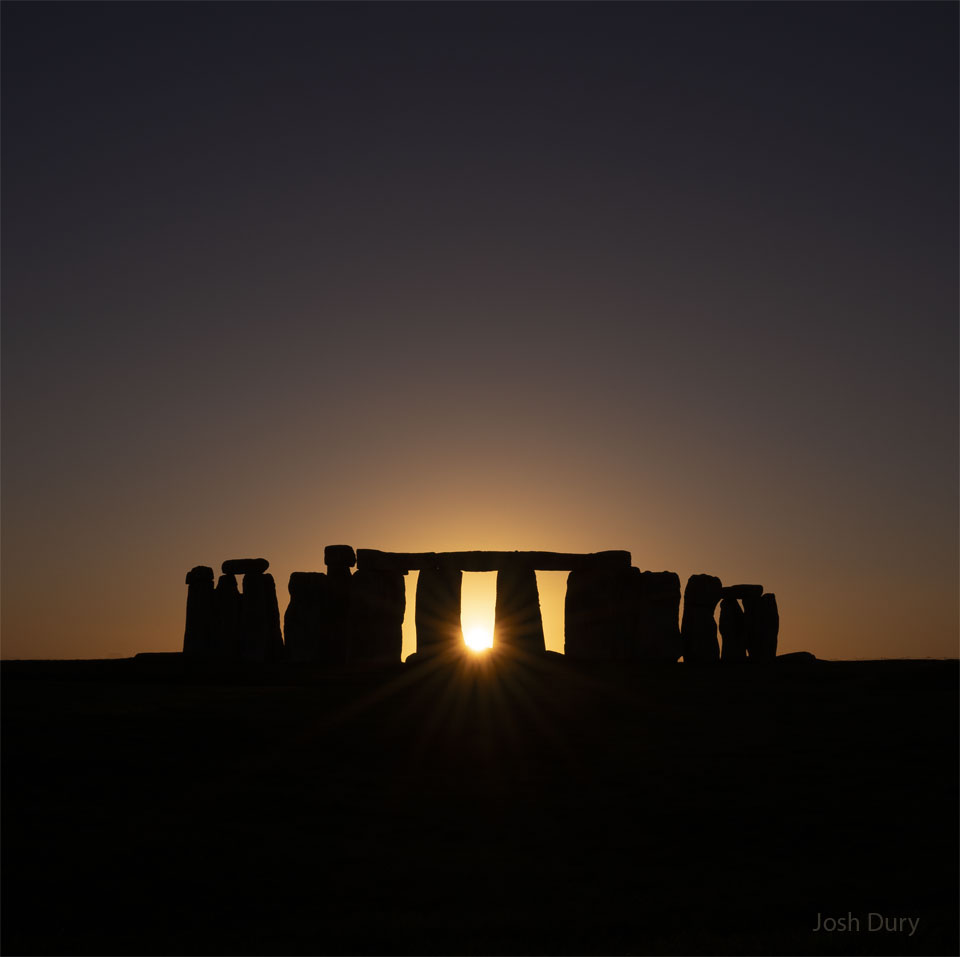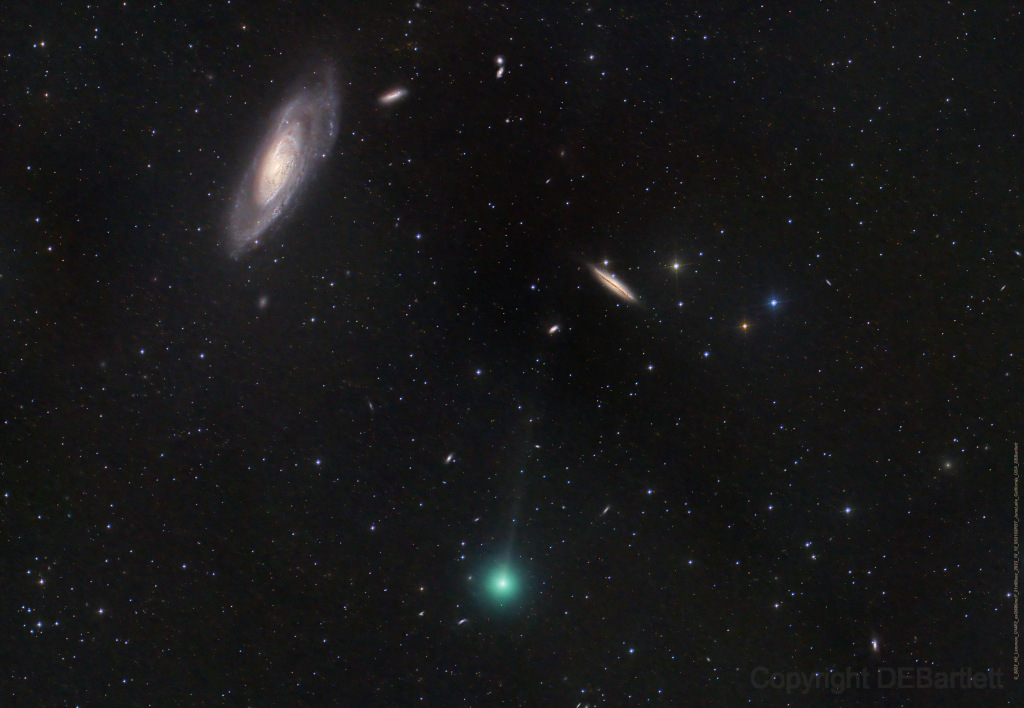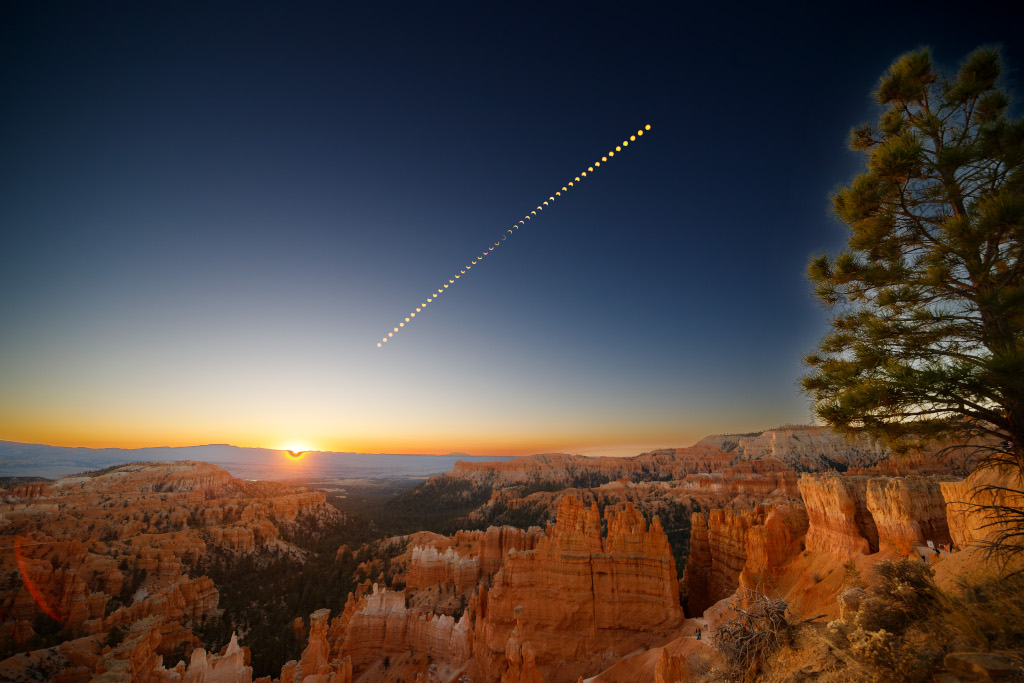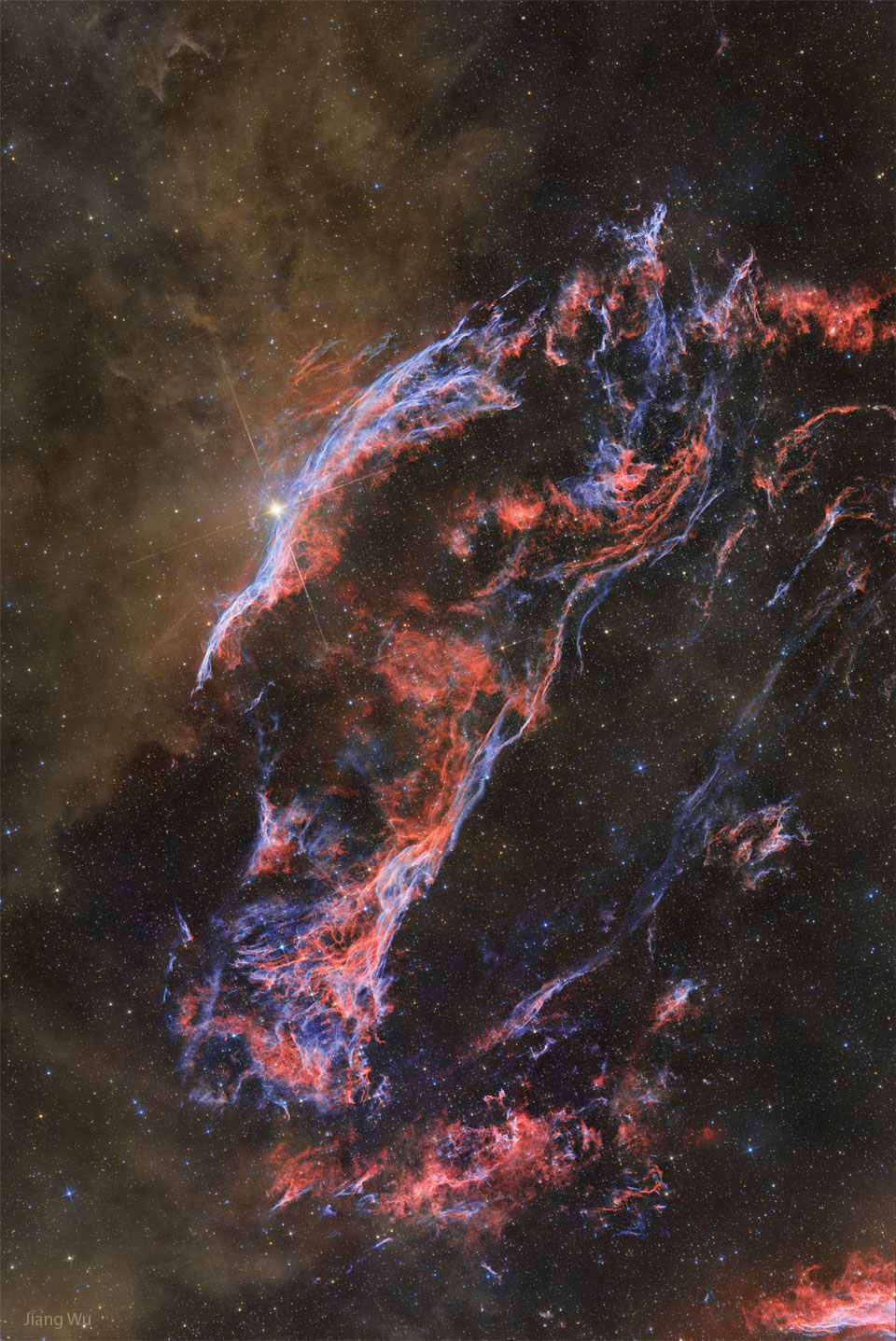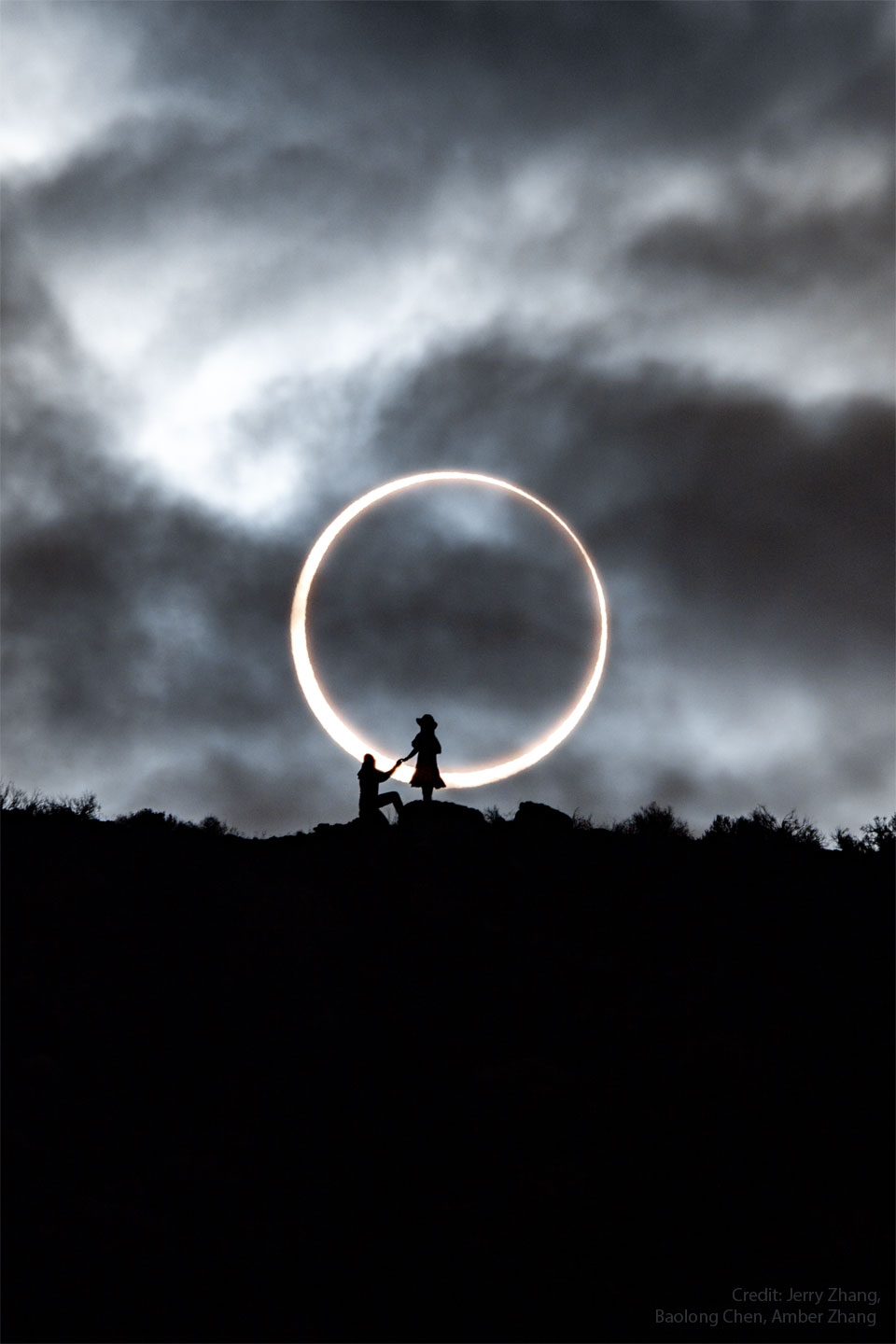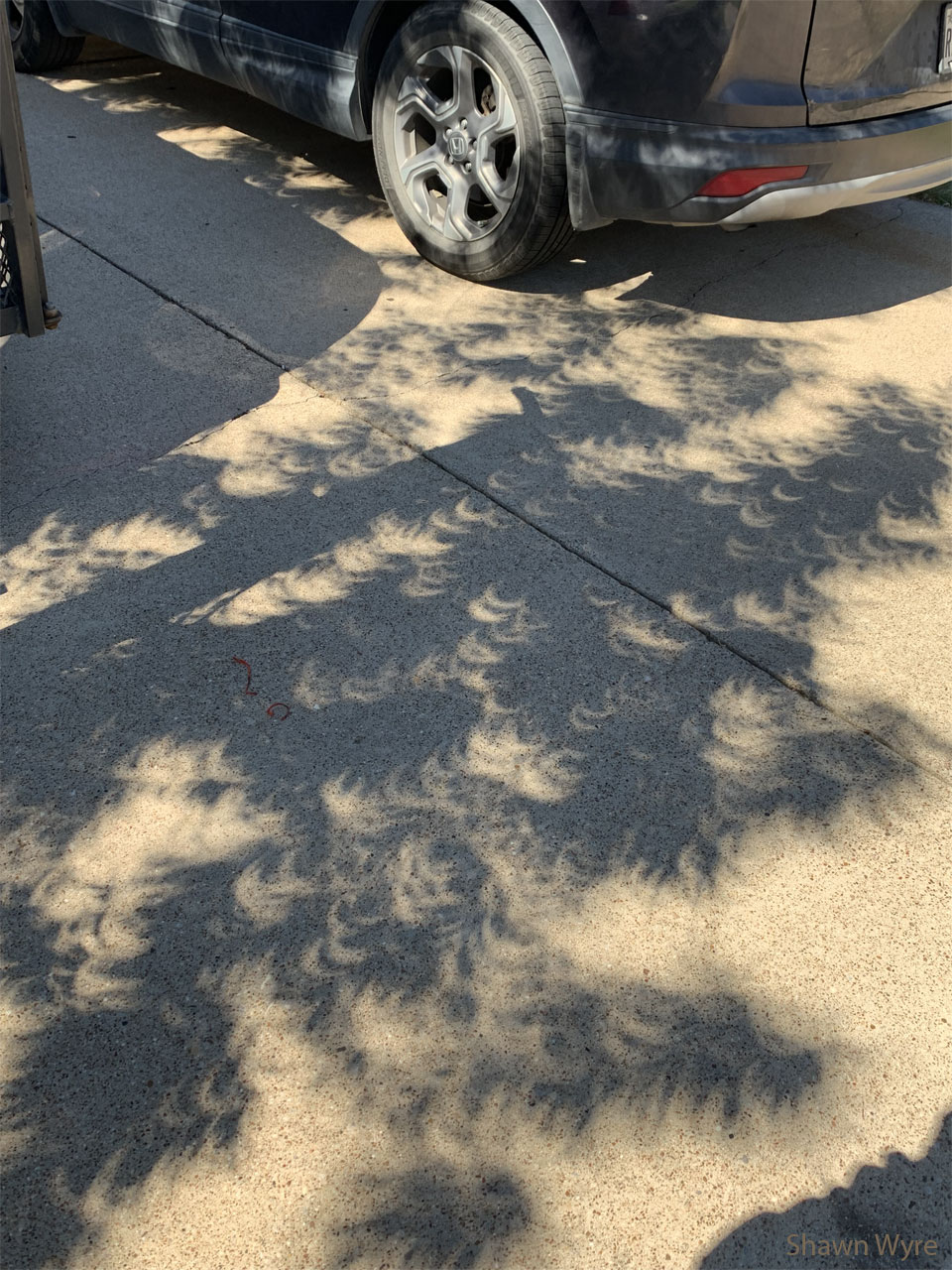Η Αστρονομική Εικόνα της Ημέρας από τη NASA
Sunset Solstice over Stonehenge
22/12/2025
Yesterday the Sun reached its southernmost point in planet Earth's sky. Called a solstice, many cultures mark yesterday's date as a change of seasons -- from autumn to winter in Earth's Northern Hemisphere and from spring to summer in Earth's Southern Hemisphere. The featured image was taken just before the longest night of the 2025 northern year at Stonehenge in United Kingdom. There, through stones precisely placed 4,500 years ago, a 4.5 billion year old large glowing orb is seen setting. Even given the precession of the Earth's rotational axis over the millennia, the Sun continues to set over Stonehenge in an astronomically significant way.
Copyright: English Heritage, Josh Dury
Προηγούμενες Αστρονομικές Εικόνες της Ημέρας από τη NASA
Ghost Aurora over Canada
22/10/2023
What does this aurora look like to you? While braving the cold to watch the skies above northern Canada early one morning in 2013, a most unusual aurora appeared. The aurora definitely appeared to be shaped like something, but what? Two ghostly possibilities recorded by the astrophotographer were "witch" and "goddess of dawn", but please feel free to suggest your own Halloween-enhanced impressions. Regardless of fantastical pareidolic interpretations, the pictured aurora had a typical green color and was surely caused by the scientifically commonplace action of high-energy particles from space interacting with oxygen in Earth's upper atmosphere. In the image foreground, at the bottom, is a frozen Alexandra Falls, while evergreen trees cross the middle. Help Wanted: Professional-astronomer level guest writers and assistant editors for APOD
Copyright: Yuichi Takasaka, TWAN
Quarter Moons
21/10/2023
Half way between New Moon and Full Moon is the Moon's first quarter phase. That's a quarter of the way around its moonthly orbit. At the first quarter phase, half the Moon's visible side is illuminated by sunlight. For the Moon's third quarter phase, half way between Full Moon and New Moon, sunlight illuminates the other half of the visible lunar disk. At both first and third quarter phases, the terminator, or shadow line separating the lunar night and day, runs down the middle. Near the terminator, long shadows bring lunar craters and mountains in to sharp relief, making the quarter phases a good time to observe the Moon. But in case you missed some, all the quarter phases of the Moon and their calendar dates during 2022 can be found in this well-planned array of telephoto images. Of course, you can observe a first quarter Moon tonight. International: Observe the Moon Night
Copyright: Marcella Giulia Pace
Galaxies and a Comet
20/10/2023
Galaxies abound in this sharp telescopic image recorded on October 12 in dark skies over June Lake, California. The celestial scene spans nearly 2 degrees within the boundaries of the well-trained northern constellation Canes Venatici. Prominent at the upper left 23.5 million light-years distant is big, beautiful spiral galaxy NGC 4258, known to some as Messier 106. Eye-catching edge-on spiral NGC 4217 is above and right of center about 60 million light-years away. Just passing through the pretty field of view is comet C/2023 H2 Lemmon, discovered last April in image data from the Mount Lemmon Survey. Here the comet sports more of a lime green coma though, along with a faint, narrow ion tail stretching toward the top of the frame. This visitor to the inner Solar System is presently less than 7 light-minutes away and still difficult to spot with binoculars, but it's growing brighter. Comet C/2023 H2 Lemmon will reach perihelion, its closest point to the Sun, on October 29 and perigee, its closest to our fair planet, on November 10 as it transitions from morning to evening northern skies.
Copyright: Dan Bartlett
A Sunrise at Sunset Point
19/10/2023
This timelapse series captured on October 14 is set against the sunrise view from Sunset Point, Bryce Canyon, planet Earth. Of course on that date the New Moon caught up with the Sun in the canyon's morning skies. Local temperatures fell as the Moon's shadow swept across the high altitude scene and the brilliant morning sunlight became a more subdued yellow hue cast over the reddish rocky landscape. In the timelapse series, images were taken at 2 minute intervals. The camera and solar filter were fixed to a tripod to follow the phases of the annular solar eclipse. APOD Album: Annular Solar Eclipse of 2023 October
Copyright: Martin Ratcliffe
Dust and the Western Veil Nebula
18/10/2023
It's so big it is easy to miss. The entire Veil Nebula spans six times the diameter of the full moon, but is so dim you need binoculars to see it. The nebula was created about 15,000 years ago when a star in the constellation of the Swan (Cygnus) exploded. The spectacular explosion would have appeared brighter than even Venus for a week - but there is no known record of it. Pictured is the western edge of the still-expanding gas cloud. Notable gas filaments include the Witch's Broom Nebula on the upper left near the bright foreground star 52 Cygni, and Fleming's Triangular Wisp (formerly known as Pickering's Triangle) running diagonally up the image middle. What is rarely imaged -- but seen in the featured long exposure across many color bands -- is the reflecting brown dust that runs vertically up the image left, dust likely created in the cool atmospheres of massive stars.
Copyright: Jiang Wu
PDS 70: Disk, Planets, and Moons
17/10/2023
It's not the big ring that's attracting the most attention. Although the big planet-forming ring around the star PDS 70 is clearly imaged and itself quite interesting. It's also not the planet on the right, just inside the big disk, that’s being talked about the most. Although the planet PDS 70c is a newly formed and, interestingly, similar in size and mass to Jupiter. It's the fuzzy patch around the planet PDS 70c that's causing the commotion. That fuzzy patch is thought to be a dusty disk that is now forming into moons -- and that had never been seen before. The featured image was taken in 2021 by the Atacama Large Millimeter Array (ALMA) of 66 radio telescopes in the high Atacama Desert of northern Chile. Based on ALMA data, astronomers infer that the moon-forming exoplanetary disk has a radius similar to our Earth's orbit, and may one day form three or so Luna-sized moons -- not very different from our Jupiter's four.
Copyright: NASA
Eclipse Rings
16/10/2023
She knew everything but the question. She was well aware that there would be a complete annular eclipse of the Sun visible from their driving destination: Lake Abert in Oregon. She knew that the next ring-of-fire eclipse would occur in the USA only in 16 more years, making this a rare photographic opportunity. She was comfortable with the plan: that she and her boyfriend would appear in front of the eclipse in silhouette, sometimes alone, and sometimes together. She knew that the annular phase of this eclipse would last only a few minutes and she helped in the many hours of planning. She could see their friend who set up the camera about 400 meters away at the bottom of a ridge. What she didn't know was the question she would be asked. But she did know the answer: "yes". Album: Selected eclipse images sent in to APOD
Copyright: Jerry Zhang (left), Baolong Chen (photographer) & Amber Zhang (right)
An Eclipse Tree
15/10/2023
Yes, but can your tree do this? If you look closely at the ground in the featured image, you will see many images of yesterday's solar eclipse -- created by a tree. Gaps between tree leaves act like pinhole lenses and each create a small image of the partially eclipsed Sun visible in the other direction. The image was taken in Burleson, Texas, USA. Yesterday, people across the Americas were treated to a partial eclipse of the Sun, when the Moon moves in front of part of the Sun. People in a narrow band of Earth were treated to an annular eclipse, also called a ring-of-fire eclipse, when the Moon becomes completely engulfed by the Sun and sunlight streams around all of the Moon's edges. In answer to the lede question, your tree not only can do this, but will do it every time that a visible solar eclipse passes overhead. Next April 8, a deeper, total solar eclipse will move across North America. Album: Selected eclipse images sent in to APOD
Copyright: Shawn Wyre
Η Αστρονομική Εικόνα της Ημέρας από τη NASA (NASA Astronomy Picture of the Day) είναι μια δωρεάν υπηρεσία που παρέχει καθημερινά μια εντυπωσιακή εικόνα από το σύμπαν, την λήψη της οποίας έχει πραγματοποιήσει κάποιος από τους αστρονόμους της NASA ή από κάποιον από τους δορυφόρους ή τα τηλεσκόπια που η NASA λειτουργεί. Οι εικόνες που εμφανίζονται καλύπτουν μια ευρεία γκάμα από θέματα, συμπεριλαμβανομένων των αστερισμών, των γαλαξιών, των πλανητικών συστημάτων, των κομητών, των αστρικών σωμάτων και των παρατηρητηρίων. Κάθε εικόνα συνοδεύεται από μια σύντομη εξήγηση και πληροφορίες σχετικά με το τι παρατηρείται στην εικόνα.
